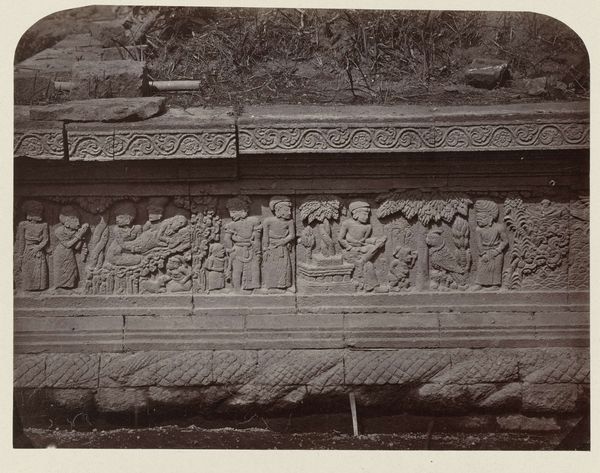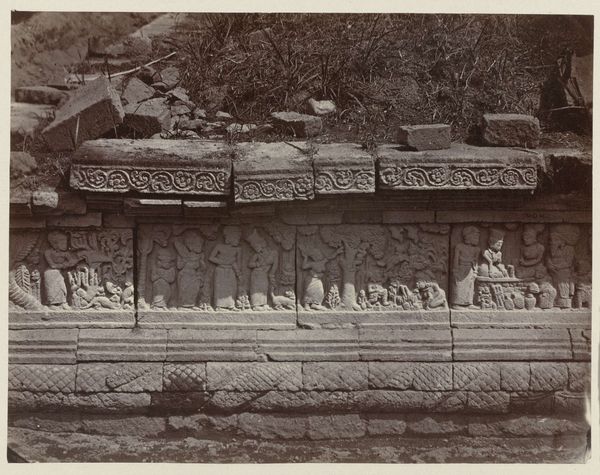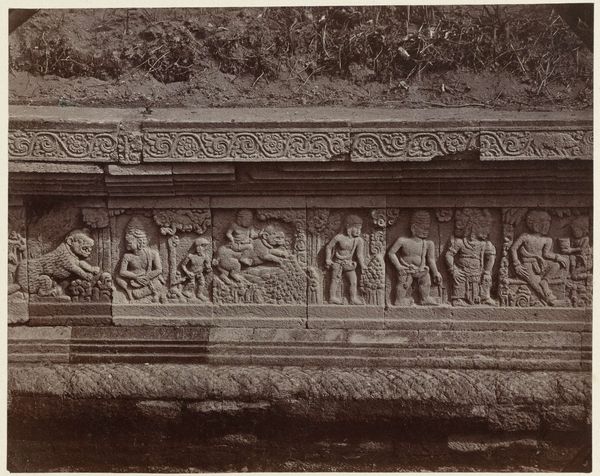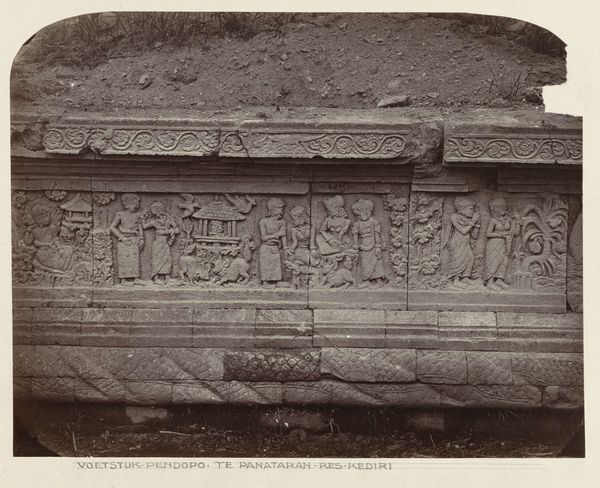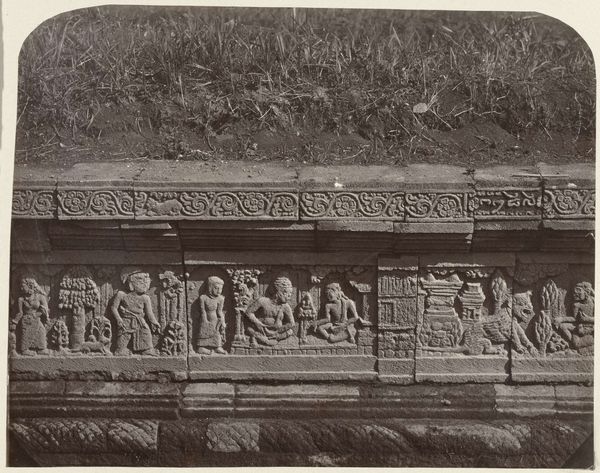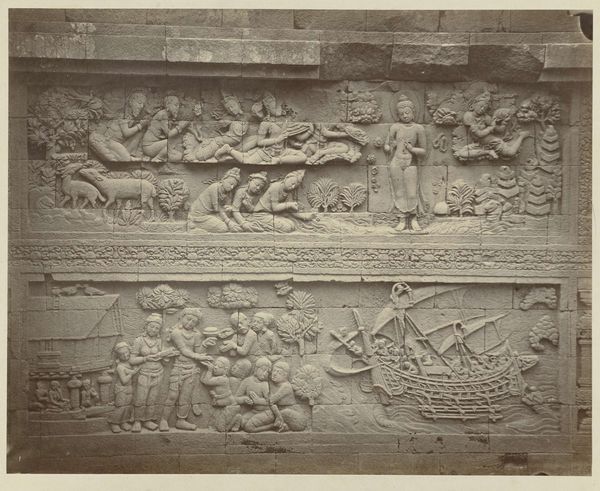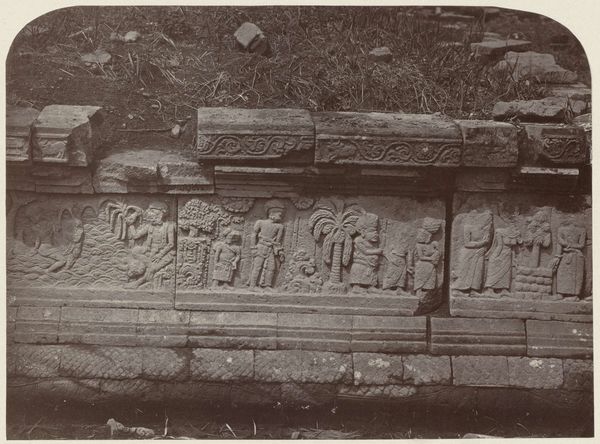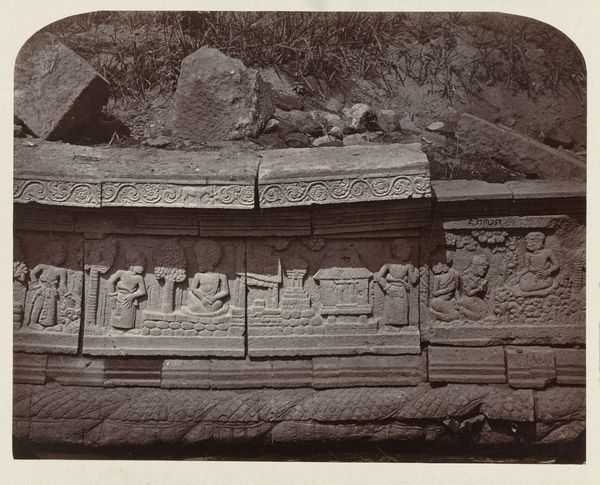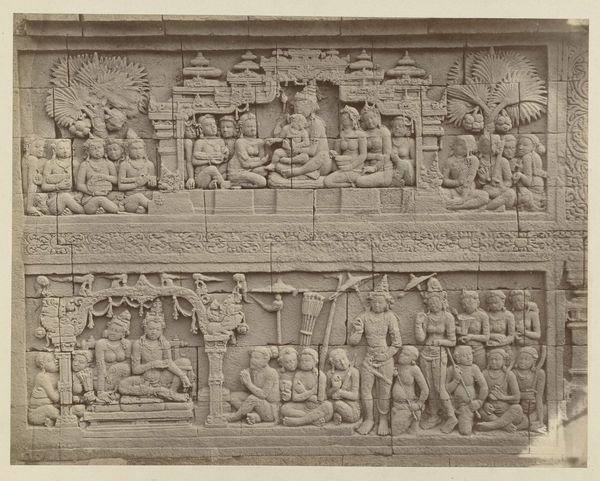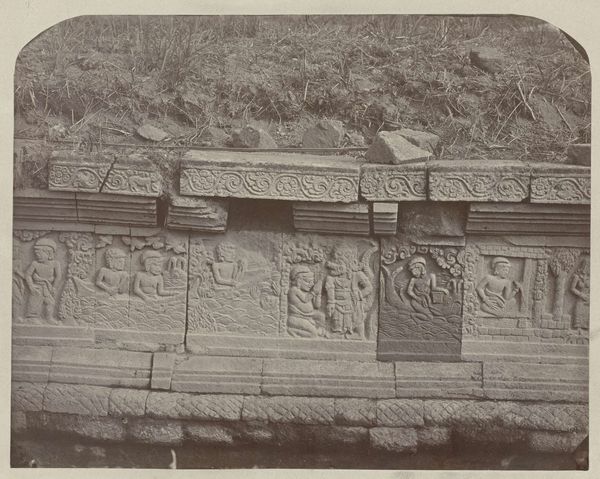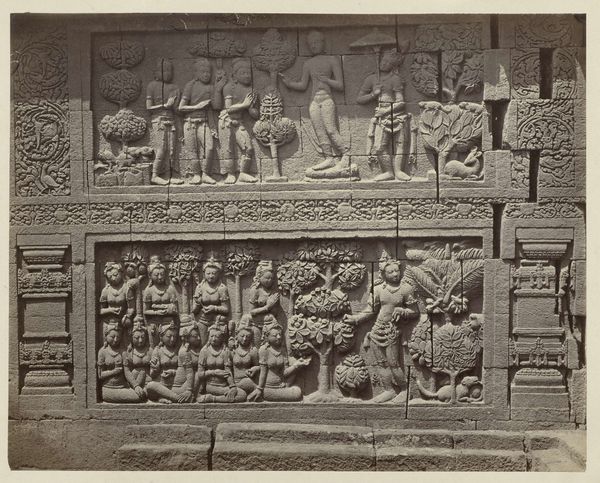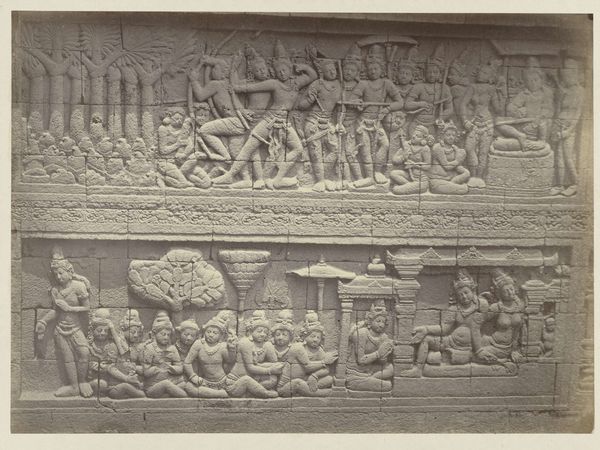
Basreliëf op het pendopo voetstuk aan de westzijde van Candi Panataran. Possibly 1867
0:00
0:00
carving, relief, photography
#
carving
#
asian-art
#
relief
#
photography
#
carved into stone
#
ancient-mediterranean
Dimensions: height 210 mm, width 260 mm
Copyright: Rijks Museum: Open Domain
Curator: Here we have a photograph, believed to be from 1867, taken by Isidore Kinsbergen. The picture captures a bas-relief on the pendopo pedestal located on the west side of Candi Panataran. Editor: The scene has such a weighty, almost monumental feel to it, even in this photographic representation. You can feel the weight of the stone and the stories it holds. The shallow relief seems to trap light and shadow in the figures, giving them life. Curator: Indeed. Bas-reliefs like this were not merely decorative; they functioned as visual narratives, communicating stories and beliefs to those who viewed them. Think of them as early forms of graphic novels. What recurring figures or images stand out to you? Editor: Well, my attention is drawn to the repetitive figuration. The consistent style speaks to a dedicated workshop and a collective of artisans contributing their labor and skills. It emphasizes how craft traditions, here the physical carving into stone, became deeply entwined with societal values and religious narratives. I’m really thinking about what kinds of chisels they were using here. Curator: Notice how the figures, while sharing similarities, each possess unique gestures and adornments. Each character plays a part within a grander symbolic narrative. The act of physically carving is less the point than the transmission of meaning: How cultural narratives crystallize in form and become etched into collective memory, what mythic meanings the individuals themselves take on, standing in proximity to each other in this ancient relief. Editor: I see what you mean. It’s the juxtaposition that is powerful. How these figures come to life within specific historical circumstances—dependent not only on the stone itself but the socioeconomic and technological constraints the artists worked within. Curator: Kinsbergen's photograph transports us not only to a place, but also a particular moment in time, filtered through his colonial lens, as well, of course. Editor: Yes, absolutely! Ultimately, we're not only looking at ancient carving here, but thinking about its journey through photographic reproduction. Both capture and transform labor. Curator: Absolutely, it's all so interwoven, a kind of conversation across time and medium. Editor: Exactly, it highlights the enduring dialogue between materials, labor, and the human drive to record, interpret, and assign meaning.
Comments
No comments
Be the first to comment and join the conversation on the ultimate creative platform.
